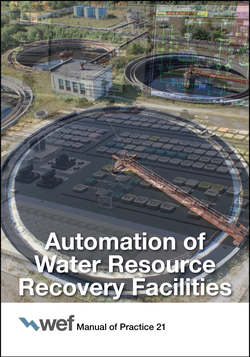Читать книгу Automation of Water Resource Recovery Facilities - Water Environment Federation - Страница 213
4.7 Rules-Based Control
ОглавлениеRules-based control can be considered a set of rules that are often implemented with a simple “if-then-else” structure. Rules-based control often can be applied with little quantitative knowledge of the actual processes to be controlled. Rules-based controllers are typically simple, transparent, intuitive, and easily understood. For instance, the header-pressure setpoint for an aeration control system might be periodically (e.g., every 5 minutes) adjusted by the following rule:
If (any valve position >95%) 0.05 psi)
Else if (any valve position <20%) then (decrease pressure setpoint by 0.05 psi)
Else (do not change pressure setpoint).
Other more complicated rule-based strategies have been implemented on biological nutrient removal (BNR) projects and real-time control of sewers. Vitasovic (2006) discussed the advantages and disadvantages of rules-based controllers compared to optimization controllers for real-time control of urban drainage systems. While optimization controllers can provide better control under some conditions, they require more work to implement and maintain and may not be justified in all conditions.
